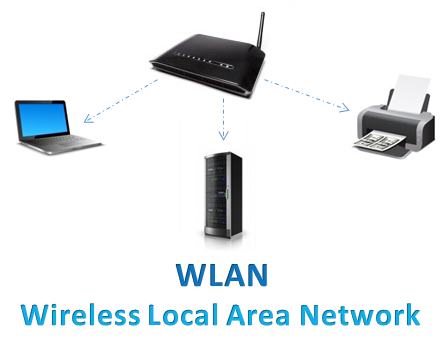Wireless Local Area Network
WLAN (Wireless Local Area Network) is used for network communication between devices without the use of wires or cables. The devices can be connected wireless and some of the best examples of WLAN devices are laptop, printers, servers etc.

Wireless LAN (WLAN) is restricted in its diameter to a single building or a campus or a single room etc. A WLAN is operated by individuals and not by large scale network providers.
Advantages of WLAN
Some of the advantages of WLAN are:
1. Flexibility: Nodes can communicate with each other without any restriction as radio waves can penetrate walls.
2. Planning: Only wireless adhoc networks do not require a price planning as compared to wired networks that require planning.
3. Design: Wireless networks allow for the design of small independent, almost invisible devices that can be carried or placed any where easily.
4. Robustness: Wireless networks can service disasters such as earth quakes etc.
5. Cost: Addition off new node into an existing WLAN would not increase the cost.
Disadvantages of WLAN
Some of the disadvantages of WLAN are:
1. Quality of service (QOS): As radio transmission is used, it offers lower bandwidth. Also, there are high error rates due to interference and high delay.
2. Proprietary solutions: There are several companies that have come up with solutions to problems of WLAN with some additional features. Hence it is required to use different products from the same vendor.
3. Restrictions: The use of the wireless products depends on the state and country regulations laws.
4. Safety and security: As transmission is in the form of radio waves, the sender and receiver are exposed to radiations that might lead to few health problems.
Eavesdropping is much easier in wireless LAN compared to other wired networks, hence we need to use encryption mechanisms so as to provide security.
Average Acceleration Calculator
Average acceleration is the object's change in speed for a specific given time period. ...
When an object falls into the ground due to planet's own gravitational force is known a...
In Mathematics, the permutation can be explained as the arrangement of objects in a particular order. It is an ordered...
A rectangle can be explained as a 4-sided quadrilateral which contains equal opposite sides. In a rectangle
A three sided polygon which has three vertices and three angles is called a triangle. Equilateral triangle...







